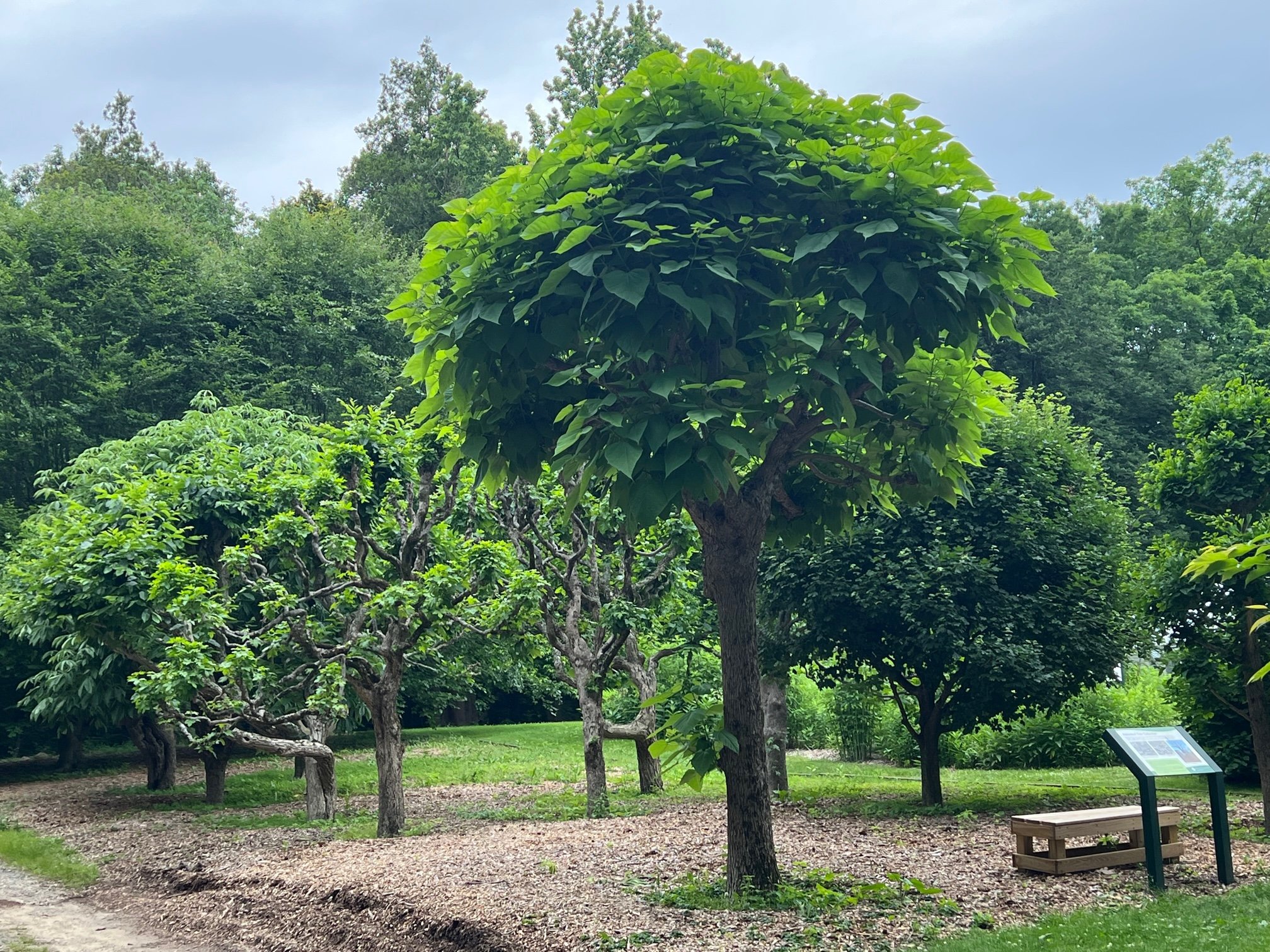Pollarded Garden




Pollarded Garden
Return to the main Gardens & Collection page.
Located next to the Greenhouse, this style of pruning is called "pollarding", an old English term that means "crew cut". Pollarding offers a unique and visual feature, keeping trees compact where space is limited. In Dr. Bartlett's day, these trees were used for experimental purposes. Scientists would introduce insects and diseases, monitor their destructive effects, and attempt to remedy these problems with cutting-edge treatments of the time. At the end of the season, the diseased branches were removed by using the pollarding pruning methods.
Dr. Bartlett and his staff planted rows of trees that were pruned back to the same point each year, giving them a stunted, uniform look and stature, another popular early European style. Each year, measurements would be taken so that they could be consistently maintained to a precise height and width. This technique keeps the trees compact when space is limited. The visual impact of the uniform rows made pollarded tree gardens popular with some of Bartlett's customers. The tree gardens also served as living experiments. Bartlett scientists and students would introduce insects and diseases onto some of the trees and would compare and monitor the impact of the insects and diseases by comparison to neighboring trees of the exact size and shape. At the end of each season, the diseased material would be removed.
